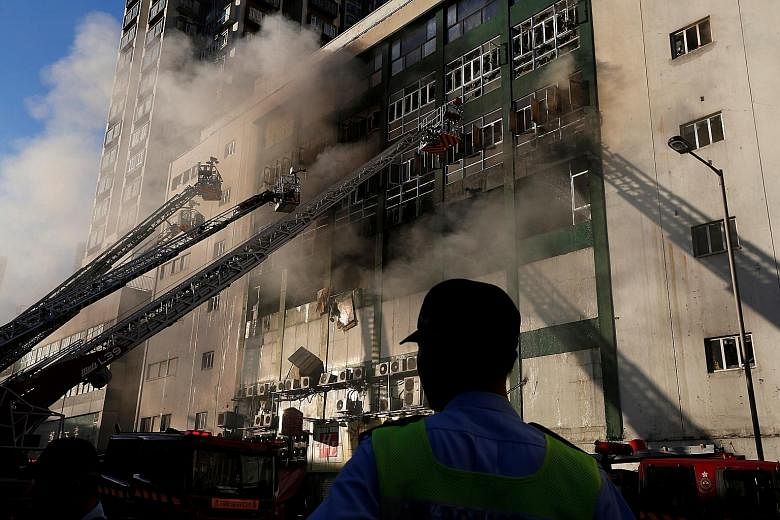Two fires at industrial buildings in a span of three weeks have shed light on how regulations have failed to keep up with the booming storage trade in Hong Kong.
In one of them last month, two firemen died and nine other people were hurt in the blaze that took 108 hours to put out.
Investigators later found such items as compressed gases and substances that produced flammable vapours in the storage facilities at Amoycan Industrial Centre, an industrial building in Ngau Tau Kok.
It was also revealed that one of the biggest challenges faced by the firefighters was to break into 200 mini-cubicles in the facility, each separated by metal sheets, with no knowledge of what was inside.
Last week, the dangers of such storage facilities were revealed in a fire at Cheong Fat Factory Building after authorities found three units in the 53-year-old industrial building being divided illegally for residential use. A pair of teenage siblings living with their mother and stepfather in one of the illegal cubicles were rushed to hospital.
Yesterday, the government announced a clampdown on owners who do not seek prior approval before converting the uses of their premises. Starting Aug 29, the city's Lands Department will take stronger enforcement measures to safeguard public safety, it said.
Landlords found to have violated the conditions for the use of industrial buildings would be issued a warning and given 14 days to comply with the laws before the authorities take action to enter their units.
Secretary for Development Paul Chan said in a statement that the coexistence of industrial or storage activities and flow of people in conventional industrial buildings could prove dangerous.
"If the use in breach of the lease attracts members of the public such as students and customers who are not familiar with the environment of an industrial building to visit or gather in the building, this may pose a risk to them," said Mr Chan.
Industry experts said sky-high property prices in Hong Kong that result in tight living spaces have driven up demand for the storage trade in the city.
Property consultancy firm CBRE's Asia-Pacific head of research, Dr Henry Chin, said Hong Kong's storage trade grew by about 41 per cent in the past three years.
"Demand for self-storage is mainly driven by the packed living environment which makes in-house storage close to impossible in many cases," he said. "All the self-storage supply is coming from converted, old industrial buildings."
With factories moving their production to the mainland, vacant spaces were quickly and easily converted to house storage facilities. By the end of last year, there was 4.8 million sq ft of mini-storage space in Hong Kong, compared to a total industrial space of 358 million sq ft.
A study by Colliers International two years ago showed that about 852,000, or 76 per cent, of the city's private residential units lack a dedicated storage area.
Hong Kong resident Roy Cheong, 28, a fitness trainer, told The Straits Times that he has been paying about HK$250 (S$43) a month for a mini-storage space to keep his high-end bicycle for a year.
"Imagine four to five people living in a 450 sq ft apartment, there is hardly any walking space in my flat," he said. "It was only when I found out about such storage facilities that I decided to buy my bicycle."


